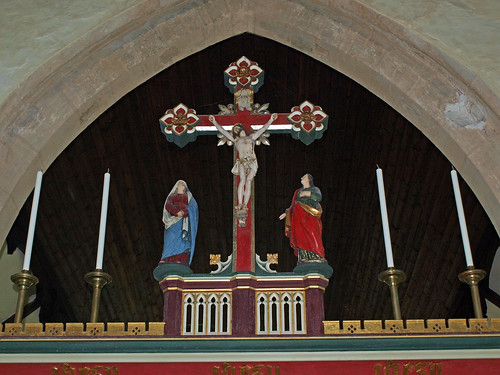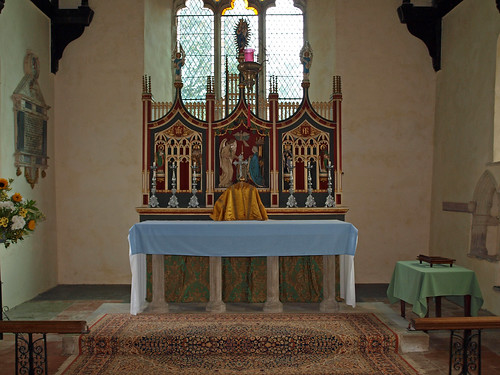ST MARY. Flint and stone. Norman nave, see one blocked N window. Transitional S doorway. The shafts and scalloped capitals are purely Norman, but the arch is decidedly pointed. No zigzag; flat row of small triangles instead. Dec chancel and W tower, see the bell-openings, and in the chancel one S window.* The reticulated E window is of 1902, but may be a correct replacement. Also Dec the Piscina and Sedilia. Their forms look in fact rather like c. 1300, whereas the preserved window has ogee arches, as has also a tomb recess in the N wall. - FONT. By the same workmen as the S doorway. Square. The decorative motifs are undisciplined: big chevrons not accurately placed, strips of triangles, etc. - PAINTING. In the Norman window three red trails with buds or knobs at the end, as familiar from Norman illumination.
* (Also in the chancel an ogee-headed niche. This is in the SE buttress.)
KETTLEBASTON. Most of its ancient treasures are in the medieval church, chiefly 14th century, but with a Norman window and traces of red wall-painting nearly 700 years old. There is a massive Norman font with zigzag ornament, a finely carved old chest, and a bell which rang out sadly and gladly in Elizabethan England. Hanging on the wall are photographs of its greatest treasures, found last century embedded in the chancel wall, and now at the British Museum. They show fragments of alabaster panels with figures notable for the delicate carving of their draperies.



No comments:
Post a Comment